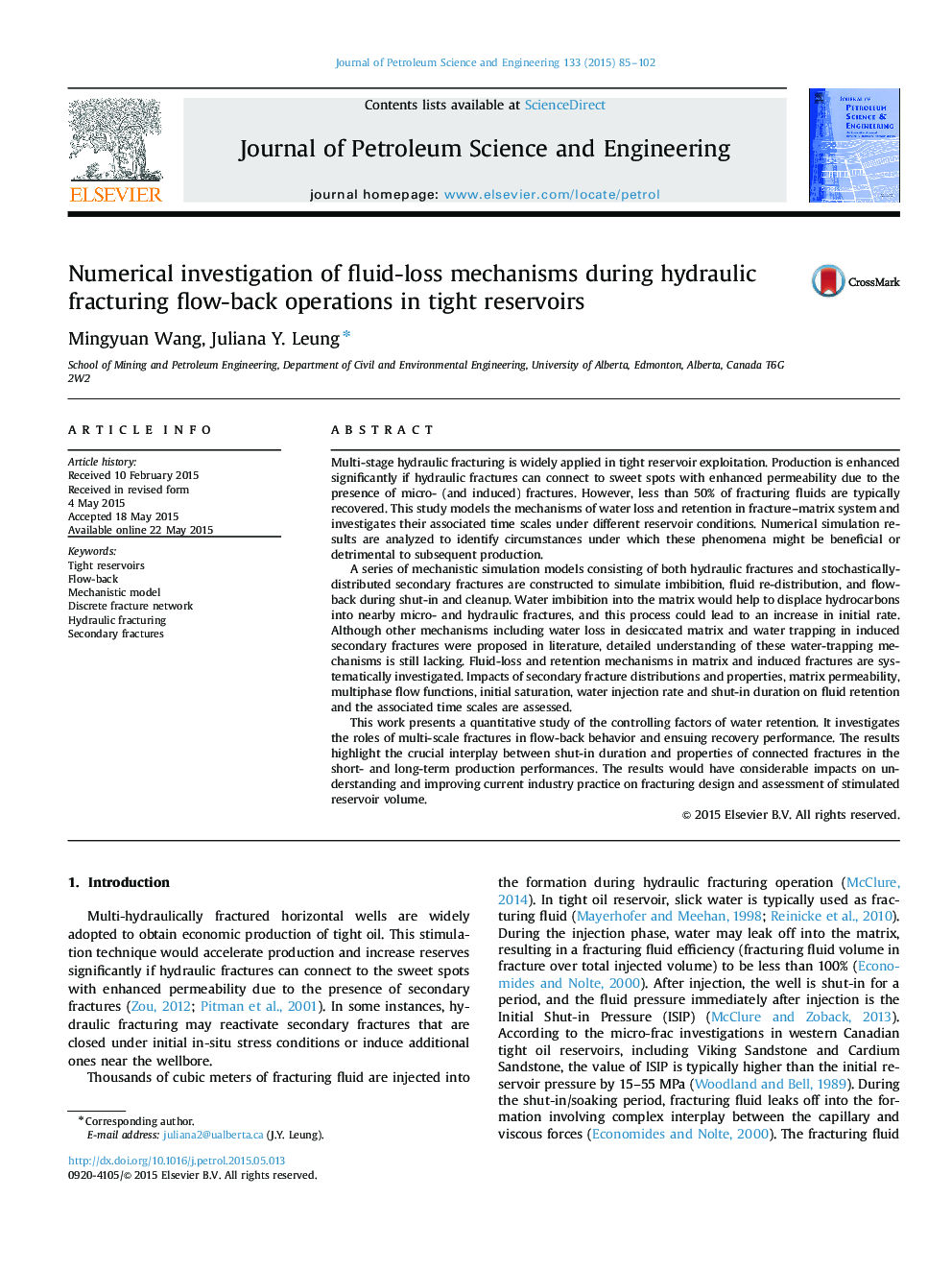| کد مقاله | کد نشریه | سال انتشار | مقاله انگلیسی | نسخه تمام متن |
|---|---|---|---|---|
| 1754701 | 1522808 | 2015 | 18 صفحه PDF | دانلود رایگان |
• Controlling factors of water retention in matrix and secondary fractures are studied.
• Impacts of operational strategies on flow-back are investigated.
• Higher initial rate does not necessarily imply enhanced long-term production.
• Water recovery depends on the interplay between viscous and capillary forces.
• This work provides insight into the role of secondary fracture in water loss.
Multi-stage hydraulic fracturing is widely applied in tight reservoir exploitation. Production is enhanced significantly if hydraulic fractures can connect to sweet spots with enhanced permeability due to the presence of micro- (and induced) fractures. However, less than 50% of fracturing fluids are typically recovered. This study models the mechanisms of water loss and retention in fracture–matrix system and investigates their associated time scales under different reservoir conditions. Numerical simulation results are analyzed to identify circumstances under which these phenomena might be beneficial or detrimental to subsequent production.A series of mechanistic simulation models consisting of both hydraulic fractures and stochastically-distributed secondary fractures are constructed to simulate imbibition, fluid re-distribution, and flow-back during shut-in and cleanup. Water imbibition into the matrix would help to displace hydrocarbons into nearby micro- and hydraulic fractures, and this process could lead to an increase in initial rate. Although other mechanisms including water loss in desiccated matrix and water trapping in induced secondary fractures were proposed in literature, detailed understanding of these water-trapping mechanisms is still lacking. Fluid-loss and retention mechanisms in matrix and induced fractures are systematically investigated. Impacts of secondary fracture distributions and properties, matrix permeability, multiphase flow functions, initial saturation, water injection rate and shut-in duration on fluid retention and the associated time scales are assessed.This work presents a quantitative study of the controlling factors of water retention. It investigates the roles of multi-scale fractures in flow-back behavior and ensuing recovery performance. The results highlight the crucial interplay between shut-in duration and properties of connected fractures in the short- and long-term production performances. The results would have considerable impacts on understanding and improving current industry practice on fracturing design and assessment of stimulated reservoir volume.
Journal: Journal of Petroleum Science and Engineering - Volume 133, September 2015, Pages 85–102
